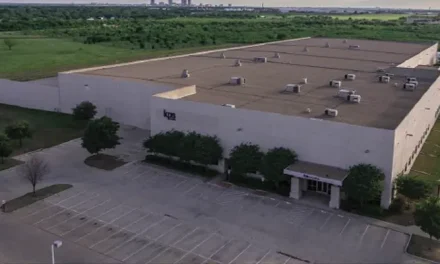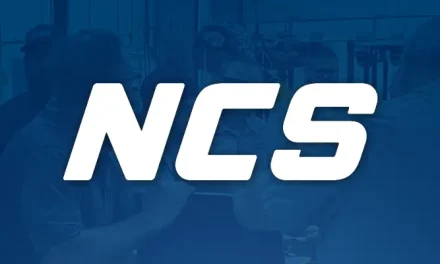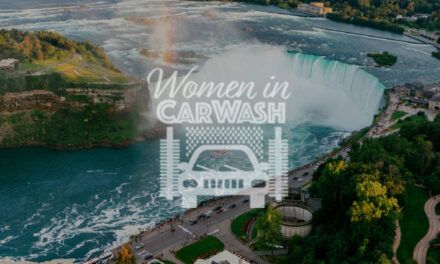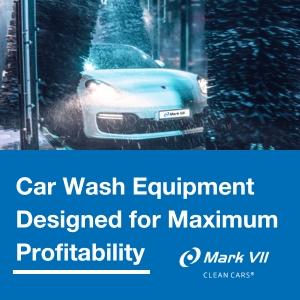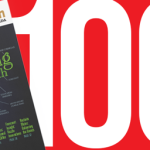
Get the “Hole” Truth Regarding Forecourt Manhole Covers

Get the “Hole” Truth Regarding Forecourt Manhole Covers
By Ed Kammerer
With all the abuse that they are liable to experience on a daily basis, it’s not a stretch to say that the manhole covers that dot the forecourts of service stations throughout the country are a lot like comedian Rodney Dangerfield. You know, they “get no respect.”
The list of indignities that manhole covers are susceptible to include:
Potential damage due to load imbalances, missing or broken bolts and excessive deflection
A balsa-wood core construction that swells, which prevents easy access to turbine enclosures
Water migration due to cracks or holes in the cover or skirt
 Dog-earing caused by the blades of snowplows, which will compromise the manhole’s seals and their ability to prevent harmful water intrusion
Dog-earing caused by the blades of snowplows, which will compromise the manhole’s seals and their ability to prevent harmful water intrusion
The passage of vehicles of all shapes and sizes throughout the day, from sports cars to school buses and dump trucks
Constant assault from the elements – heat and rain in the summer; cold, snow, salt and ice in the winter
It’s no wonder that after many years of proud service, the manhole covers – which are designed to mount flush to the forecourt surface – can take on the look of a dented can. The problem when this happens is that the manhole covers still have a critical job to perform – they must provide quick, easy access to the piping and equipment that allows underground storage tanks to be filled and serviced, while simultaneously preventing the intrusion of any foreign matter, from rainwater and ice to dirt and debris.
Steel manhole covers have been traditionally tasked with this job, but after many years of use, they have a tendency to become bowl-shaped, which allows water to gather on their surface; in the winter, when this water freezes, a slip-and-fall hazard may arise. The wide range of weather extremes in Canada will also cause the covers to expand and contract based on their coefficient of thermal expansion, which will also lead to bowing of the cover.


To combat the many variables that place traditional steel manhole covers under constant duress, manufacturers have found success with new fiberglass-composite construction materials. Fiberglass has a much more forgiving coefficient of thermal expansion, with every change in temperature of 1ºC resulting in a negligible expansion of contraction of the cover of just 0.0000054 centimeters. This makes fiberglass-composite manhole covers suitable for use in temperatures as low as -50ºC (-58ºF).
Meet The Family
Taking the plight of the humble manhole cover into account, OPW Retail Fueling, Smithfield, NC, has developed three distinct product lines of manhole covers, Each have varying degrees of sophistication, but all will unquestionably outperform traditional steel manhole designs. They are:
- Fibrelite: In 2013, OPW acquired the United Kingdom-based Fibrelite brand, which was the retail-fueling industry’s first fiberglass-composite access covers and are now the crown jewel in OPW’s manhole-cover offering. Fibrelite manhole covers are watertight, easy to remove and non-bolted, which makes them ideal for use in all forecourt applications ranging from general tank-sump access to single/multiport fill sumps, and interstitial sumps to monitoring wells. Fibrelite covers are available in a wide range of colors and sizes, including round, square and rectangular. Other features include an anti-slip surface; anti-corrosion construction; a monolithic structure that eliminates delaminating; and ergonomic, single-person removal capability via the Fibrelite lifting handle. A heavy-duty version is available for use at fueling sites that feature high amounts of truck, bus and industrial traffic.
- Conquistador: These fiberglass-composite manhole covers are lightweight and extremely durable, making sump accessibility easier than ever. Conquistador covers are constructed of Duratuff fiberglass, which makes them ideal for use in all service station, commercial and industrial driveway applications. The lightweight Duratuff puts an end to the risk of back, hand, foot and finger injuries during opening and closing operations, while the textured tread pattern helps make slip-and-fall incidents a thing of the past. There are two lifting options to choose from: a stainless-steel recessed handle or a key-lift provision. The three mounting options include “roto-lock,” which maintains a secure, watertight seal without the need to locate threaded bolts on the mounting ring; bolt-down options; powder-coated ring and brass bolts that prevent rust and corrosion; and a peel-and-stick ribbed-gasket design for easy replacement. Other features include a structural fiberglass-reinforcement matrix. Old 46- and 48-inch manholes can be easily converted to the Conquistador via a special retrofitted mounting ring that fits seamlessly into existing mounting configurations.
- Matador: The economical Matador model features OPW’s next-generation fiberglass-composite technology, making it the industry’s lightest manhole cover and the preferred low-cost option. The lightweight design makes sump access easier and safer, while reducing the risk of back, foot, hand and finger injuries occurring as it is being removed or replaced. A slip-resistant textured tread pattern lowers the risk of slip-and-fall injuries. Other notable features include a corrosion-resistant steel frame; polyurethane skirt with flair; and recessed stainless-steel lift handle. There are two mounting options, including “roto-lock,” which ensures a watertight connection without the need to locate the threaded bolt holes on the mounting ring; this creates quick-and-easy access while maintain water-resistant security. Finally, the Matador manhole covers are interchangeable with other manufacturers’ designs.
Conclusion
Next-generation fiberglass composite manhole covers have been a true game-changer for the retail fueling industry, with OPW producing a series of covers that feature none of the shortcomings of traditional steel models, while delivering longer service life, improved reliability and best-in-class ability to prevent the water intrusion and ice invasion that can compromise the effectiveness of a service station’s fueling operation.
Ed Kammerer is the director of global product management for OPW, based in Cincinnati, OH, USA. He can be reached at ed.kammerer@opwglobal.com For more information on OPW, go to OPWGlobal.com.

